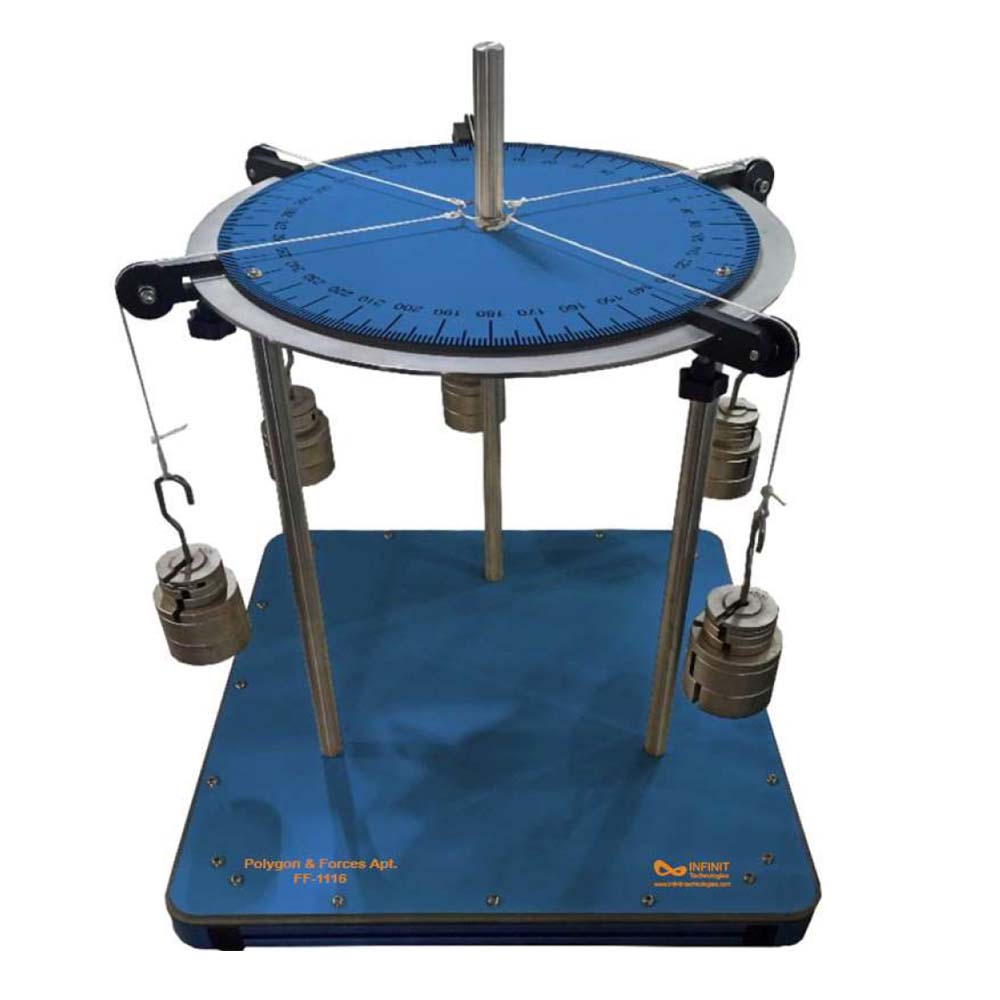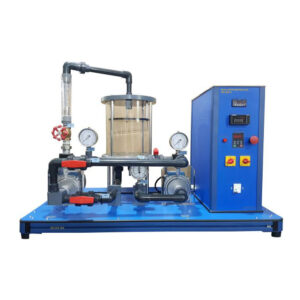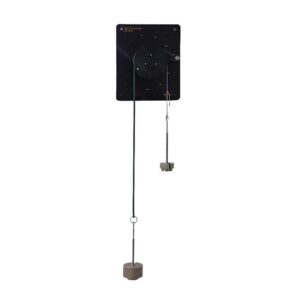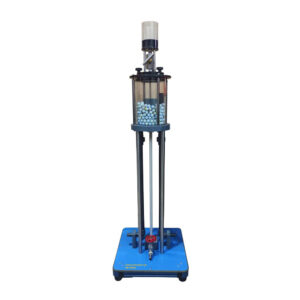This apparatus is designed to express conditions of equilibrium to students regarding co-planar forces acting on a circular disc. This apparatus is comprised largely of a round disc that is placed horizontally on three legs attached to a foundation. A 360* protractor is set up on the round disc and some pulleys on clamps from the center and over the edges of the disc are also attached. The pulleys are attached so different load hangers can be used to apply different loads on the disc. Conditions of equilibrium can be obtained by centralizing a small ring available over the central pin with cords to load hangers where the loads and lines of action are variable. In this way, it is possible to construct the multiple of forces in equilibrium and to find the resultant forces. The model in the picture shows a simple but elegant demonstration of the conditions of equilibrium for three or more coplanar forces acting either at a point, on a circular disc or on a rectangular shape. In this apparatus, a maximum of 5 loads can be applied to the chosen shape. The loads can be applied by setting up the pulleys at different angular positions. The line of action of the forces are recorded by drawing along the weighted cords onto a piece of paper attached to the pulley table. A range of experiments are possible like e.g investigating concurrent and non concurrent coplanar forces acting on simple shapes, comparing the experimental values with the relevant polygons of force. A complete instruction manual will be provided. The manual will describe the apparatus, its application, experimental procedure and typical test results.
Experiments
- To resolve by experiment any suitable system of static coplanar forces which may or may not be concurrent.
- To verify graphically using:
- a) Triangle of forces for three or more than three concurrent coplanar forces.
- b) Polygon of forces for more than three concurrent coplanar forces.
- c) Link polygon for three or more non-concurrent coplanar forces.
- To investigate (c) for either a disc or a rectangular shape.
- To compare the accuracy of the experiment by comparing the experimental and graphical results.
Specifications
- Self-contained, bench mounted.
- Direct measurement of forces.
- Adjustable lines of action of forces.
- Practical verification of triangle of forces, polygon of forces and link polygon.
- Demonstrates equilibrium of forces at a point, applied to various points round a disc or acting on a rectangular lamina.
- Concurrent & Non-concurrent coplanar forces.
- Calibrated Weights.
- User Manual with Sample Readings.




